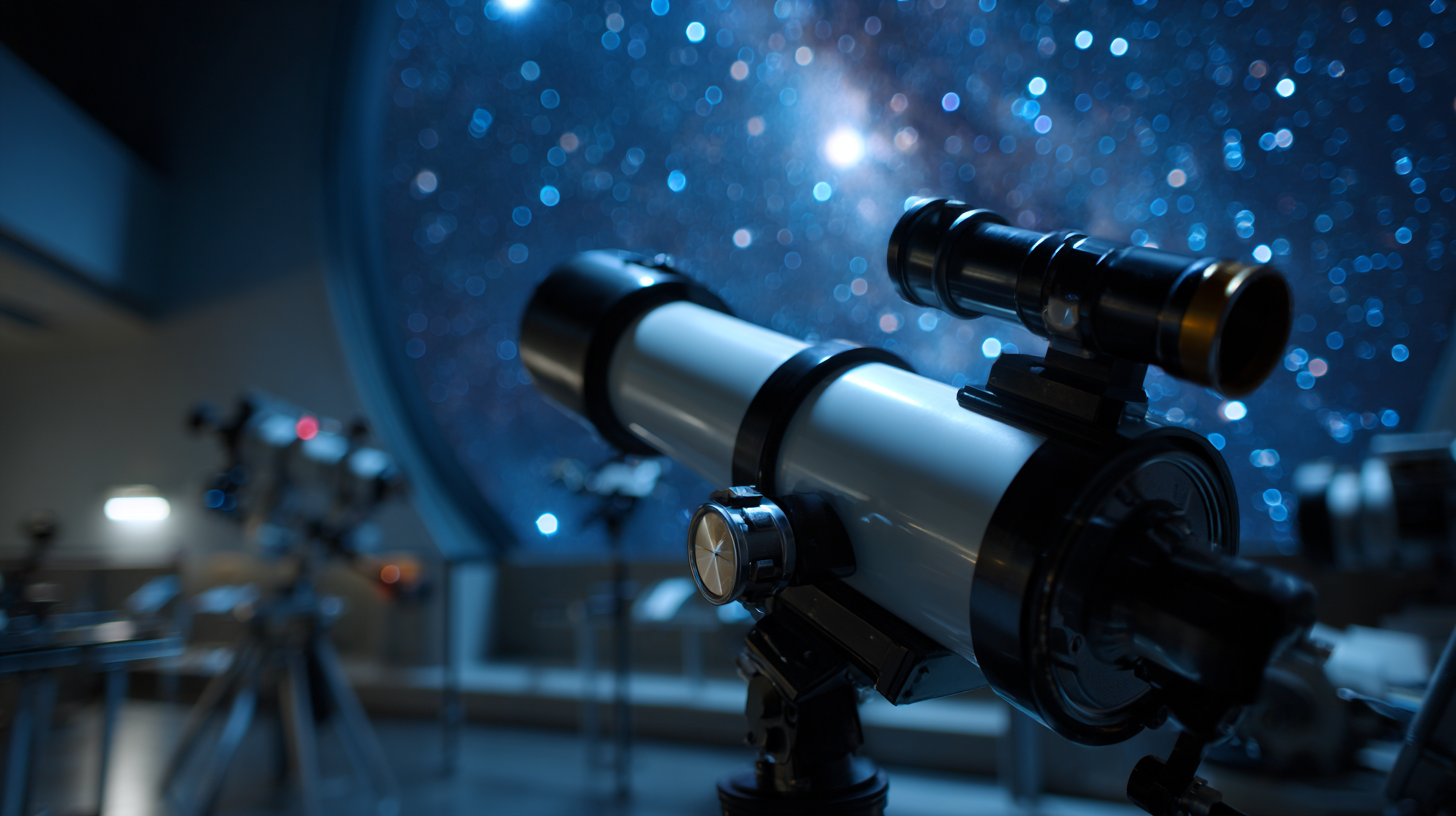Star observatories have long served as the cornerstone of astronomical research, enabling scientists to unlock the mysteries of the universe. According to a 2021 report by the International Astronomical Union, over 3,000 telescopes are currently operational worldwide, each contributing to our understanding of celestial phenomena from the dynamics of distant galaxies to the properties of exoplanets.

The advancements in technology, including adaptive optics and infrared imaging, have significantly enhanced the capabilities of these facilities, allowing astronomers to observe the universe with unprecedented clarity. With emerging observatories like the James Webb Space Telescope, launched in December 2021, we are on the brink of revolutionary discoveries that may redefine our grasp of cosmic evolution.
As we delve deeper into space, the role of star observatories will continue to be paramount in bridging the gap between theoretical astrophysics and observable reality, marking a new era of discovery in modern astronomy.
The historical significance of star observatories in astronomy cannot be overstated, as they have been pivotal in shaping our understanding of the cosmos. Since the construction of the first observatories in the 17th century, such as the famous Greenwich Observatory, astronomers have systematically cataloged celestial bodies and phenomena. These institutions laid the groundwork for modern astronomy, enabling significant discoveries like the identification of new planets and the calibration of star distances. A report from the International Astronomical Union indicates that over 300 star observatories worldwide have contributed to monumental discoveries, including the detection of exoplanets and the mapping of dark matter.
Moreover, star observatories played a crucial role during pivotal astronomical milestones. For instance, the Mount Wilson Observatory was instrumental in the discovery of the expanding universe through Edwin Hubble's observations in the 1920s. This profound revelation altered the trajectory of cosmology and provided the foundation for the Big Bang theory. According to the National Aeronautics and Space Administration, advancements in telescope technology have led to a 20% increase in the ability to detect distant galaxies since 2000. Thus, the evolution of star observatories continues to enhance our capacity for exploration and discovery in the vast expanse of space.

The advancements in telescope technology have significantly transformed the landscape of modern astronomy. With innovations such as adaptive optics and larger aperture sizes, telescopes can now capture incredibly detailed images of celestial objects. These enhancements have not only improved the clarity of astronomical observations but also allowed astronomers to detect faint light from distant galaxies, stars, and even exoplanets. The ability to observe the universe in various wavelengths, from radio to gamma rays, has further enriched our understanding of cosmic phenomena.

Moreover, the integration of digital imaging and data analysis techniques has revolutionized how astronomers interpret the information gathered from star observatories. Machine learning algorithms can now analyze vast datasets more efficiently than ever, enabling the identification of patterns and anomalies that would have previously gone unnoticed. Such capabilities have led to groundbreaking discoveries, like the detection of gravitational waves and the mapping of dark matter. As technology continues to evolve, the potential for new discoveries in the universe remains vast, underscoring the critical role of star observatories in shaping our understanding of the cosmos.
Modern star observatories play a pivotal role in expanding our understanding of the universe, leading to groundbreaking discoveries that reverberate across scientific disciplines. The Hubble Space Telescope, having operated for over three decades, has significantly altered our grasp of cosmic phenomena. Not only did it provide critical evidence for the acceleration of the universe’s expansion, but it also helped identify thousands of exoplanets, enhancing our knowledge of planetary systems beyond our own.
Similarly, the James Webb Space Telescope is expected to revolutionize astronomical research by exploring the universe's history, from the formation of the first stars to the development of galaxies. With its advanced infrared capabilities, Webb will shed light on previously hidden cosmic structures and phenomena. According to various studies, the impact of such observatories goes beyond mere astronomy; discoveries facilitated by them contribute to various fields including physics, materials science, and environmental monitoring—demonstrating that the implications of astronomical findings are woven into the fabric of modern life. The exploration of phenomena like the recently identified molecular cloud, Eos, emphasizes the ongoing potential for new star formation, marking a continual evolution in our cosmic narrative.
| Observatory Name | Location | Key Discovery | Year | Implication |
|---|---|---|---|---|
| Hubble Space Telescope | Low Earth Orbit | Expansion Rate of the Universe | 1998 | Revised understanding of dark energy |
| Mauna Kea Observatories | Hawaii, USA | Discovery of Exoplanets | 2009 | Broadened the search for life beyond Earth |
| Very Large Telescope (VLT) | Atacama Desert, Chile | First images of a planet outside our solar system | 2004 | Confirmed the existence of planetary systems |
| Kepler Space Telescope | Low Earth Orbit | Thousands of potential exoplanets detected | 2012 | Revolutionized our understanding of planet formation |
| ALMA (Atacama Large Millimeter/submillimeter Array) | Atacama Desert, Chile | Carbon monoxide detection in distant galaxies | 2013 | Insights into the formation of stars and galaxies |
The operation of star observatories has become increasingly complex in the face of contemporary astronomical challenges. Indeed, a report by the National Academy of Sciences indicated that over 70% of observatories globally are grappling with funding limitations, hindering their capacity to upgrade technology and maintain research output. The financial constraints often lead to outdated equipment, jeopardizing the ability of astronomers to conduct high-quality observations necessary for significant discoveries.
Moreover, the rise of light pollution is posing an additional threat to observational astronomy. According to the International Dark-Sky Association, artificial light has increased by more than 2% annually in many regions, obstructing the visibility of celestial objects. This has created a pressing need for observatories to adapt their strategies, employing innovative solutions such as adaptive optics and collaborating with local communities to reduce light pollution. As a result, contemporary astronomers face the dual challenge of securing financial stability while tackling environmental factors that diminish the effectiveness of their observations.
The future of star observatories is poised to witness groundbreaking innovations that will significantly enhance our understanding of the universe. With advancements in technology, such as adaptive optics and high-precision detectors, astronomers are now able to observe distant celestial objects with unprecedented clarity. These improvements not only allow for detailed studies of star formation and galaxy evolution but also enable the detection of exoplanets with Earth-like characteristics. The integration of artificial intelligence and machine learning further accelerates data processing and analysis, making it easier to identify patterns and anomalies in the cosmos.
Moreover, the emergence of space-based observatories, like the James Webb Space Telescope, marks a new era in astronomical research. By positioning telescopes outside the Earth’s atmosphere, scientists can bypass atmospheric interference and gain insights into the early universe, black holes, and cosmic phenomena. As these technological advancements continue, the collaboration between various space agencies and private sectors will play a crucial role in expanding the capabilities of star observatories. This synergy promises not only to enhance our exploration of the universe but also to inspire future generations of astronomers and astrophysicists in their quest to uncover the mysteries of the cosmos.






